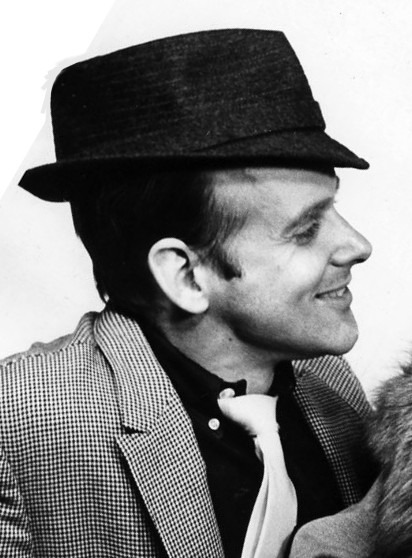When Music Met Counterculture: The Rise and Fall of 1960s Musicals

You'll find the 1960s marked a dramatic shift in Broadway musicals, starting when "Camelot" closed the curtain on theater's Golden Age in 1960. The decade's social upheaval, from Vietnam to civil rights, altered musicals from lighthearted entertainment to gritty, socially conscious works. Rock music, experimental "concept musicals," and visionary directors like Bob Fosse revolutionized the art form. The story of how counterculture reshaped Broadway reveals an artistic revolution that still echoes today.
The End of Broadway's Golden Age: Camelot's Last Stand
Disillusionment pervaded Broadway as "Camelot" marked the symbolic finale of musical theater's Golden Age in 1960. You'd notice the musical's structured formula and nostalgic portrayal of King Arthur's court felt increasingly out of touch with audiences seeking grittier, more socially relevant stories that reflected their turbulent times.
As rock, pop, and folk music captured America's imagination, Broadway's traditional musical form lost its cultural grip. You'll find that "Camelot" represents the last gasp of an era before innovative "concept musicals" took center stage. This creative revolution ushered in visionary director-choreographers like Bob Fosse, who reshaped musical theater with their distinctive artistic approaches.
The Golden Age's predictable formula gave way to experimental productions that prioritized ideas over conventional storytelling, forever altering Broadway's milieu. The shift marked a stark departure from the Technicolor spectacle that defined Hollywood musicals of the 1950s, where directors like Vincente Minnelli had created visually stunning masterpieces.

From Elvis to Vietnam: Social Upheaval Takes Center Stage
While the early 1960s rode the wave of post-war optimism, President Kennedy's assassination in 1963 shattered America's sense of innocence and reshaped Broadway's creative terrain. You'll notice how musicals shifted from World War II's upbeat patriotism to darker, more introspective themes that confronted social problems head-on.
Broadway couldn't ignore the sweeping changes around it. As the Civil Rights Movement gained momentum and the Vietnam War sparked nationwide protests, musicals reflected the cultural changes through experimental storytelling and provocative themes. You'd see shows tackling racial inequality, women's liberation, and the sexual revolution with unparalleled boldness. The safe, sanitized productions of the 1950s gave way to grittier, more authentic portrayals of American life.
This new wave of musical theater captured both the idealism and disillusionment that defined the decade. Much like horror films of the era such as The Innocents (1961) that explored psychological themes, musicals began delving deeper into the human psyche and societal fears.
The Birth of Concept Musicals and Artistic Revolution
As social upheaval reshaped American culture, a bold artistic revolution swept through Broadway in the form of concept musicals. You'll find that shows like Cabaret and "Really Trying" broke free from traditional narrative structures, choosing instead to investigate deeper themes and social commentary through innovative staging and storytelling techniques.
Director-choreographers like Gower Champion revolutionized the way musicals were presented, bringing their unique artistic visions to life through integrated dance and theatrical elements. The rise of off-Broadway venues gave artists the freedom to experiment without commercial pressures, leading to pioneering productions that challenged conventional wisdom.
These concept musicals didn't just entertain; they reflected the era's political consciousness and counterculture movement. The innovative approaches to staging, storytelling, and thematic exploration would forever change how audiences experienced musical theater. Much like cinema's response to widescreen formats, these theatrical productions embraced new techniques to differentiate themselves from television's limitations.

Broadway Auteurs: Directors Who Shaped the Decade
The visionary director-choreographers of the 1960s revolutionized Broadway by assuming unparalleled creative control over their productions. Unlike the traditional creative teams of Oscar Hammerstein II's era, these auteurs crafted every aspect of their shows, from choreography to visual style.
Although based in different artistic sensibilities, each director left an enduring mark. Bob Fosse's dark, cynical approach transformed "Cabaret," while Jerome Robbins' innovative work on "West Side Story" reshaped musical theater's boundaries. Gower Champion's casting complemented his lavish choreography in hits like "Hello, Dolly!", bridging the gap between Broadway's Golden Age and its experimental future.
Years later, you can still see their influence in modern productions, as these pioneering auteurs paved the way for directors to express unique artistic visions in musical theater.

Breaking Traditional Boundaries: Alternative Theater Spaces
Beyond the grand marquees of Broadway, a lively movement emerged in unconventional spaces throughout 1960s New York City. You'd find experimental musicals thriving in off-Broadway and off-off-Broadway venues, where creators like Dyke and Janet challenged traditional theatrical norms. These alternative spaces became sanctuaries for concept musicals that prioritized ideas over conventional plots.
Much like that girl in Chicago who plunged into dance differently, these venues revolutionized how creators approached musical theater. The examples set by shows like "Hair" and "Man of La Mancha" inspired two revivals of creative thinking: first, by equipping directors and choreographers with greater artistic control, and second, by welcoming diverse voices previously shut out of mainstream theater. This transformation laid pivotal groundwork for decades of theatrical innovation to come.
Dark Themes and Complex Characters: A New Musical Identity
Many 1960s musicals shifted away from lighthearted romance toward darker, grittier narratives that reflected society's growing social tensions. You'll find shows like "Cabaret" exploring the rise of Nazism, while others tackled themes of war, poverty, and social injustice.
The hippie movement's influence brought experimental storytelling to Broadway, changing what you'd expect from a typical musical. Instead of predictable happy endings, you'd encounter morally ambiguous characters wrestling with complex decisions. Even seemingly zany shows often masked serious undertones about political unrest and cultural upheaval.
Characters became more intricate, featuring antiheroes and conflicted protagonists who challenged your preconceptions. Through dark themes and provocative storylines, these musicals pushed boundaries and forced you to confront uncomfortable truths about society's shifting values.
Hair and the Counterculture Movement on Broadway
When "Hair" exploded onto Broadway in 1968, it shattered traditional musical theater conventions and became a defining voice of the counterculture movement. You'd never seen anything like it in the United States - a show that tackled free love, drug use, and Vietnam War protests in such a straight-forward manner.
The musical's improvisational structure meant unexpected things can happen during each performance, breaking down barriers between actors and audience.
While established theater critics weren't sure what to make of this temporary theatre on New York's most famous street, audiences welcomed its radical spirit. With its controversial nude scenes and anti-establishment message, "Hair" ran for over 1,800 performances, proving that Broadway was ready for change.
The show's success opened doors for more experimental musicals, forever altering American theater's landscape.
The Impact of Rock, Pop, and Folk on Musical Theater
As rock and pop music dominated the airwaves in the 1960s, Broadway's traditional musical domain underwent a dramatic alteration. You'd find the glossy show tunes of previous decades giving way to the raw energy of contemporary music, as chart-topping sounds from groups like The Byrds reshaped theatrical compositions.
Productions like Hair and Cabaret welcomed this musical revolution, incorporating rock and folk elements that reflected the era's counterculture movement. You'll notice how concept musicals emerged during this time, prioritizing thematic exploration over traditional storytelling. These shows tackled social issues while experimenting with popular music styles, though Broadway's cultural influence diminished as rock and pop dominated the charts.
The transition wasn't just musical - it represented a fundamental shift in how theater connected with audiences in a rapidly changing society.
Fiddler to Cabaret: Tackling Social Issues Through Song
Throughout the mid-1960s, Broadway musicals evolved from mere entertainment into powerful vehicles for social commentary. You'll find this transformation beautifully illustrated in shows like Fiddler on the Roof, which investigated Jewish persecution through a series of vignettes about family, tradition, and survival. Broadway music took on weightier themes as producers realized audiences were ready for more challenging material.
Cabaret pushed boundaries even further, confronting viewers with stark portrayals of Nazism, sexual decadence, and moral decay in pre-war Berlin. Along with Man of La Mancha and Hair, these productions proved that musicals could tackle society's most pressing issues while still drawing crowds. The era's political turbulence found its voice on stage, as composers and writers turned Broadway's spotlight onto discrimination, war, and cultural upheaval.
Legacy and Influence: How 1960s Musicals Changed Theater Forever
The revolutionary spirit of 1960s musicals left an enduring mark on theater that still evokes a strong response today. While traditional shows like My Fair Lady dominated the early decade, pioneering productions like Cabaret plunged the landscape forever. Today, you'll find audiences still enjoying performances that showcase the innovations from this formative era.
The 1960s gives us four lasting legacies:
- The rise of the director-choreographer as the central creative force, pioneered by visionaries like Bob Fosse
- The breaking of conventional boundaries through experimental venues and alternative spaces
- The integration of social consciousness and political commentary into mainstream musical theater
- The shift from traditional integrated musicals to ensemble-based storytelling and fourth-wall-breaking techniques
These changes fundamentally reshaped how we experience musical theater, creating a more diverse and daring art form.




